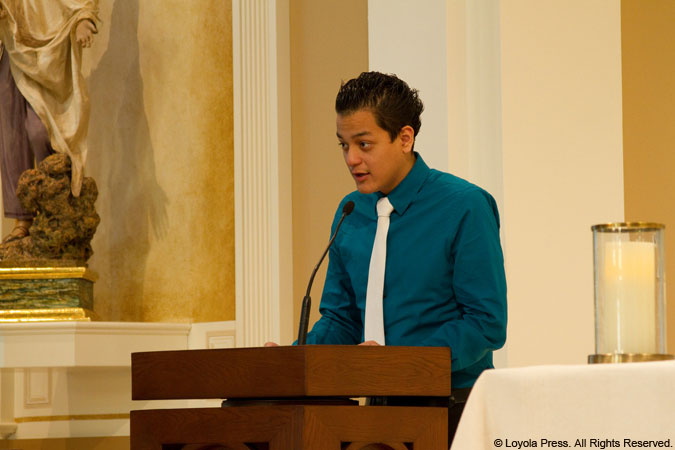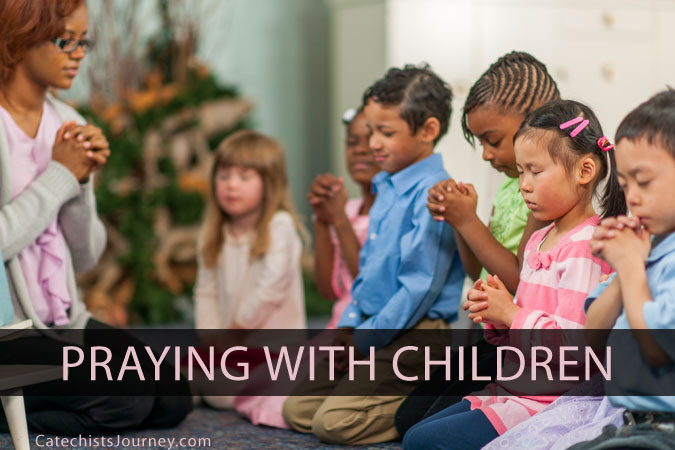
One thing that many catechists struggle with is how to prepare and lead a simple prayer experience in a faith formation setting. Too often, we find ourselves searching the Internet for an inspirational poem or quote that speaks to the occasion, and we end up reciting that as the prayer while everyone else listens. While such poems or quotes may indeed be inspirational, it is important that our prayer experiences are authentically Catholic. That doesn’t mean, however, that it needs to be complex. For a prayer experience to be authentically Catholic, it should include the following:
- the Word of God
- participation of the assembly
- sign, symbol, and ritual
Let’s start with the Word of God. The Catechism of the Catholic Church tells us that prayer is lifting our minds and hearts to God. (2559) There is no better way to raise our minds and hearts to God than to listen to his Word spoken to us. Inspirational poems and quotes can be used, but they are no replacement for the Word of God. The best practice is to use the Scripture of the day or of the previous or upcoming Sunday. Find the daily Scripture readings on the USCCB website.
Next, a key element of Catholic prayer is everyone participating and no one being left as a spectator. That is the essence of liturgical prayer, based on the notion of liturgy being the “work of the people.” Too often, we make prayer the work of the prayer leader while everyone else just says “Amen” at the end. The simplest way to have everyone participate fully is to have responses to prayers or petitions or to alternate the reciting of a prayer between “side A” and “side B.”
Finally, a third element that makes a prayer authentically Catholic is the inclusion of sacramental language or the language of mystery: sign, symbol, ritual, music or song, silence, movement, and gesture. This can be as simple as the enthronement of a Bible, participants blessing themselves with holy water, or lighting a candle.
An authentic Catholic prayer experience should be a form of Liturgy of the Word. In its simplest form, a Liturgy of the Word can consist of the following components:
- Sign of the Cross and Greeting
- Opening Prayer
- Reading of Scripture
- Psalm Response
- Silence
- Closing Prayer and Blessing
Depending on your circumstances and how much time you have, you can further embellish a Liturgy of the Word with hymns, multiple Scripture readings, a reflection on the Scripture readings, a ritual action (for example, sharing a Sign of Peace), intercessions, the Lord’s Prayer, moments of silent reflection, or some other prayer from the liturgy. However, even with all of those “embellishments,” the skeletal structure remains the same.
So, the next time you are asked to prepare a prayer experience, make it authentically Catholic by incorporating the Word of God, participation of the assembly, and sacramental language.
You may also like: Simple Tips for Leading a Simple Prayer.





Be the first to comment